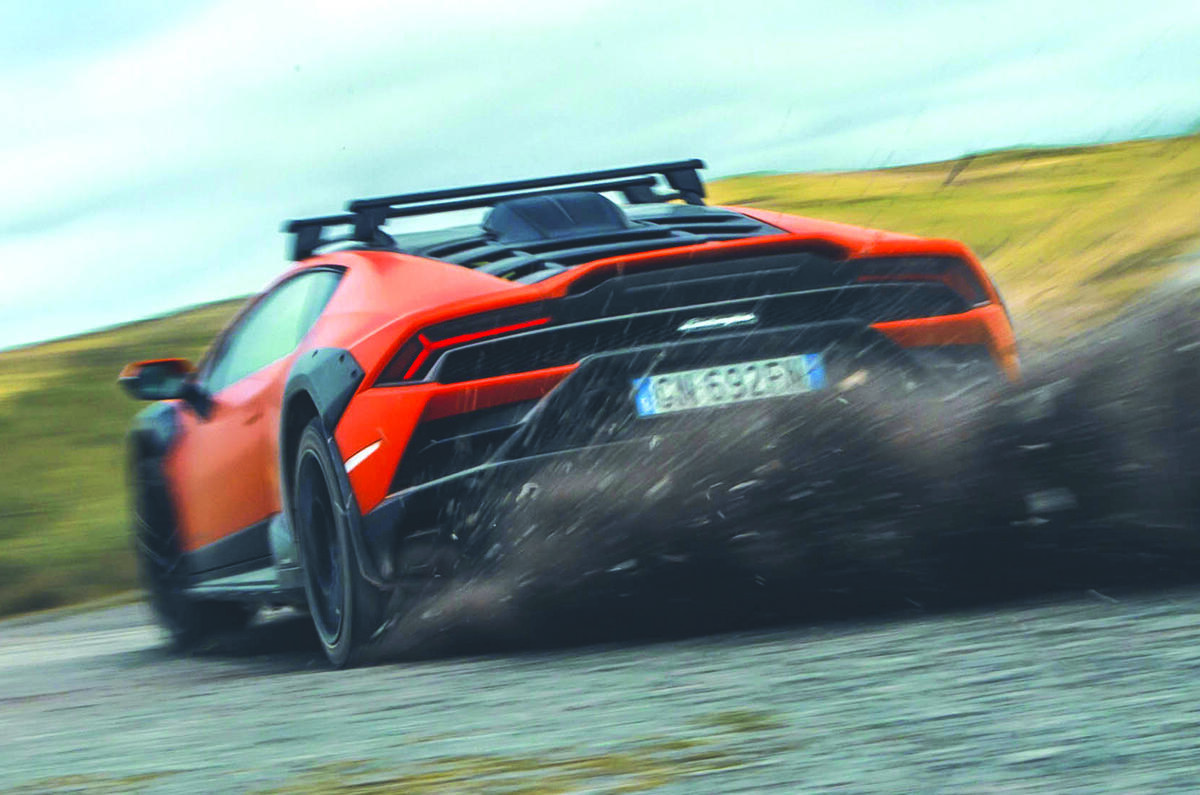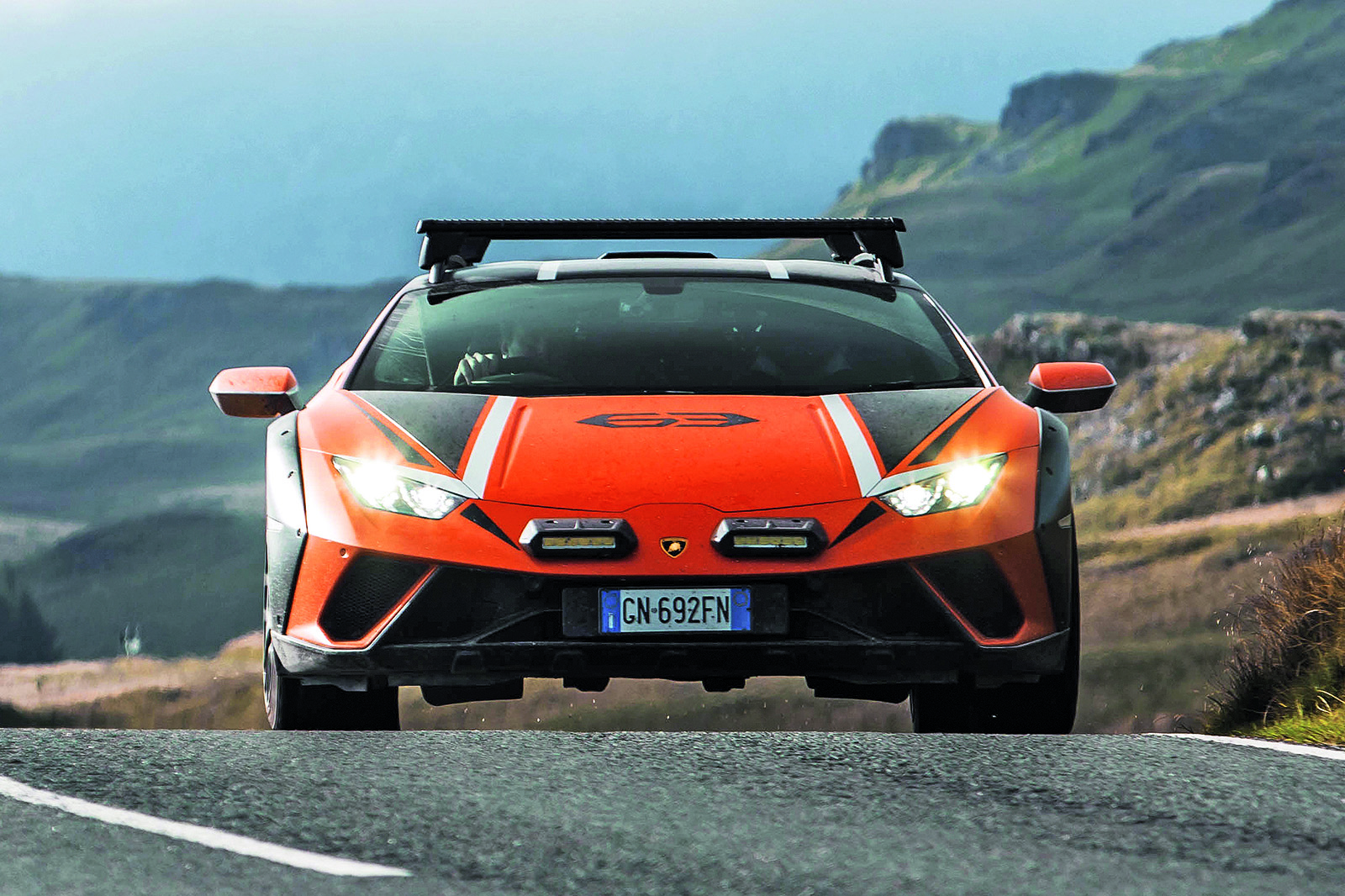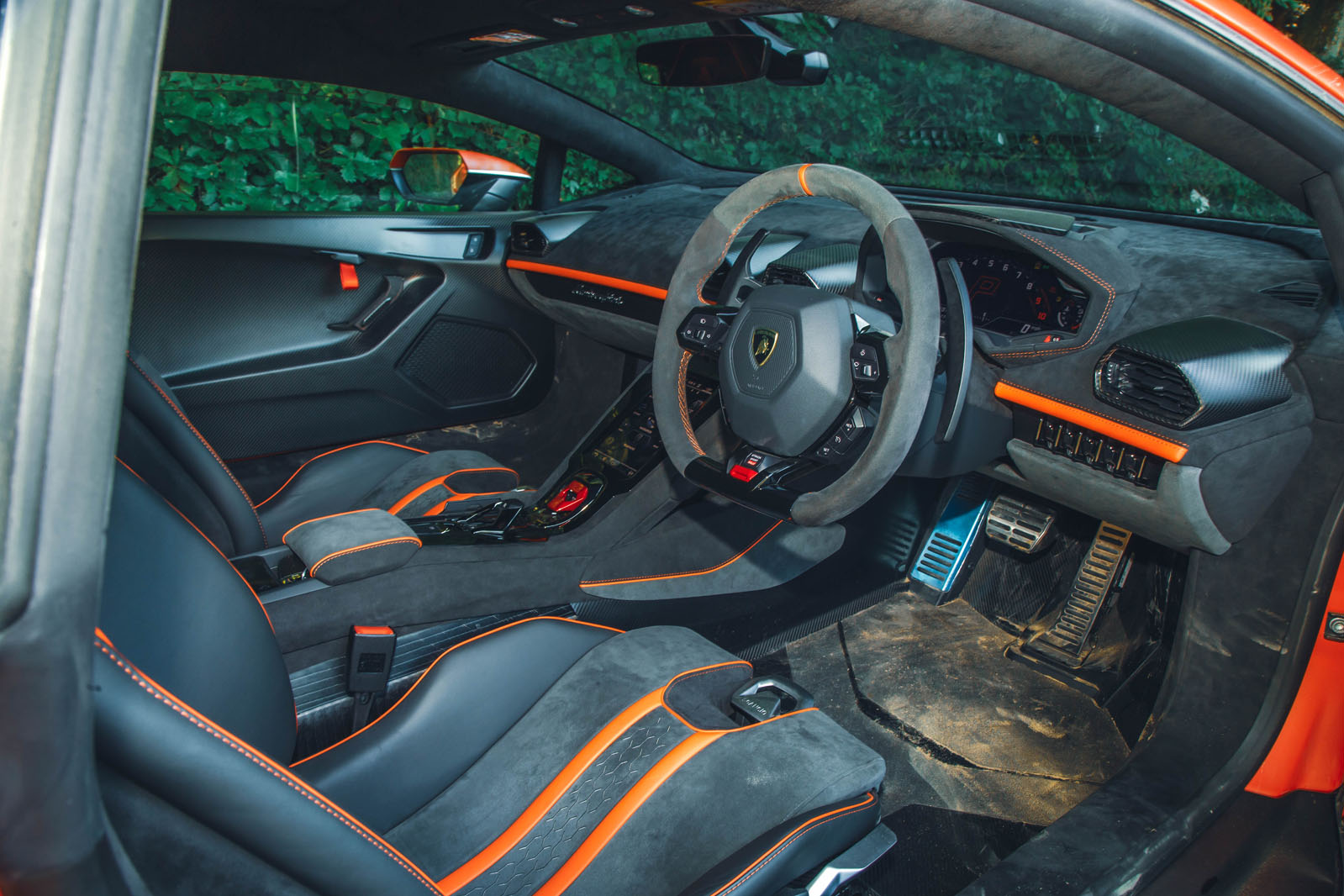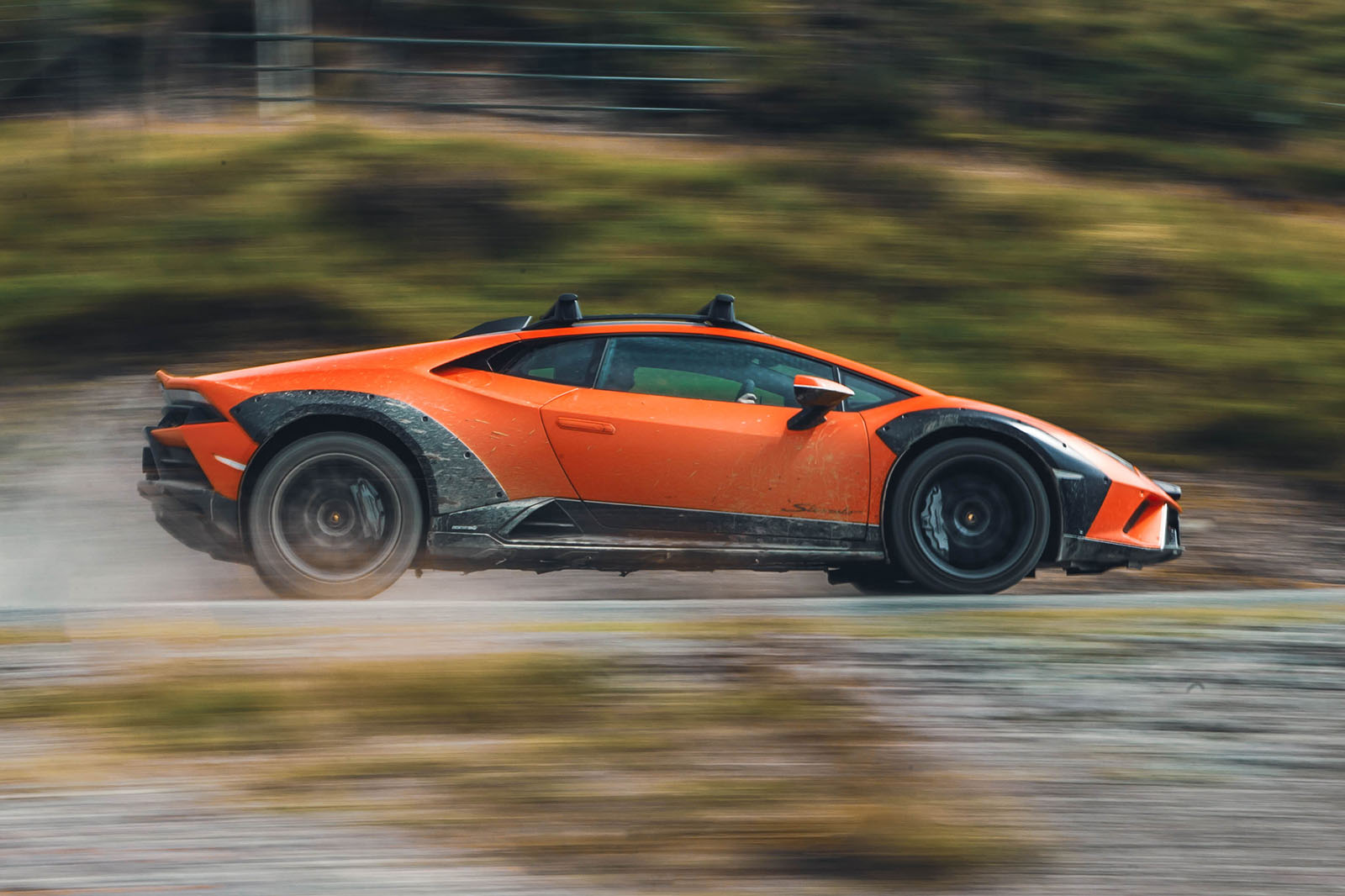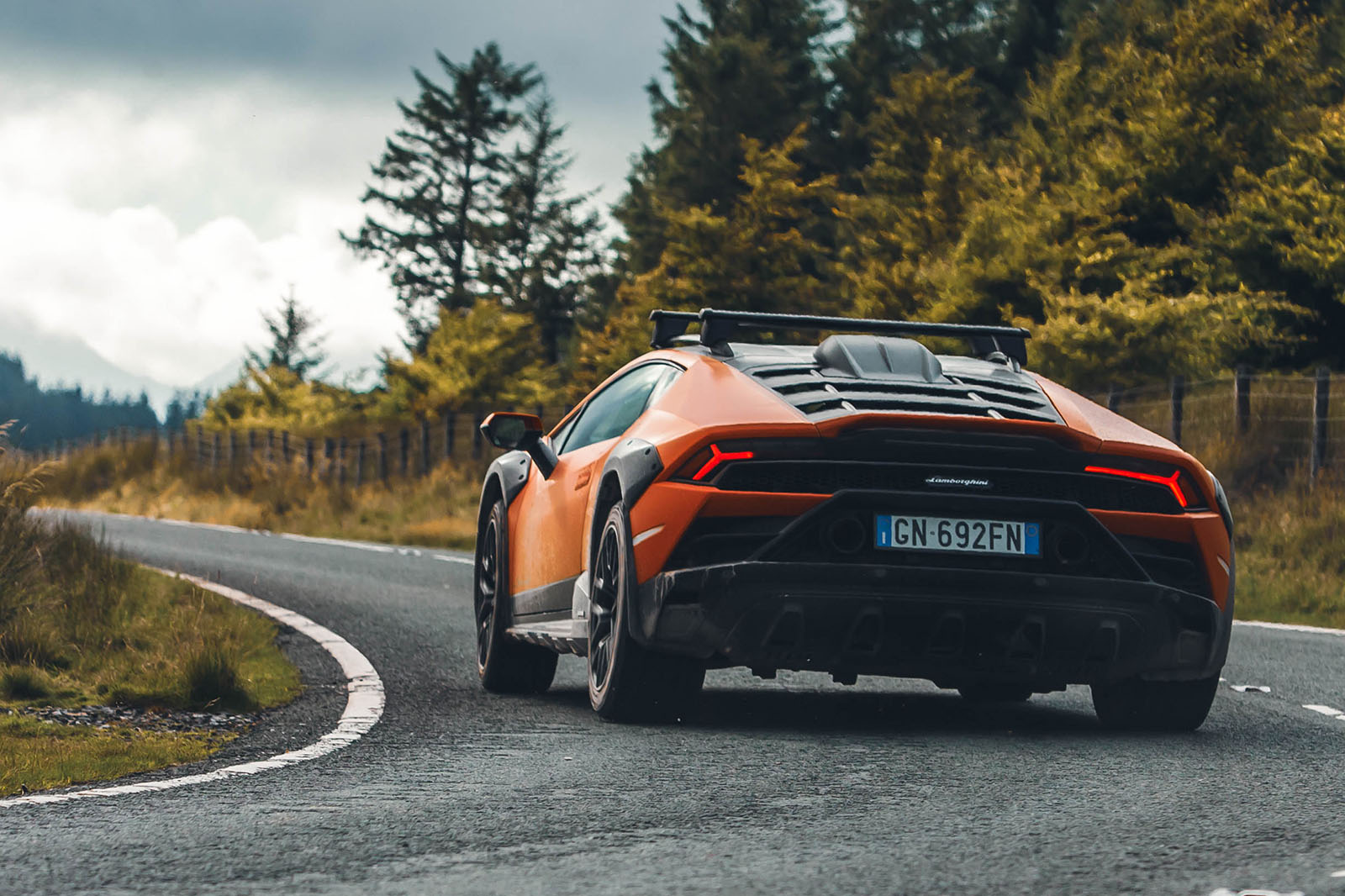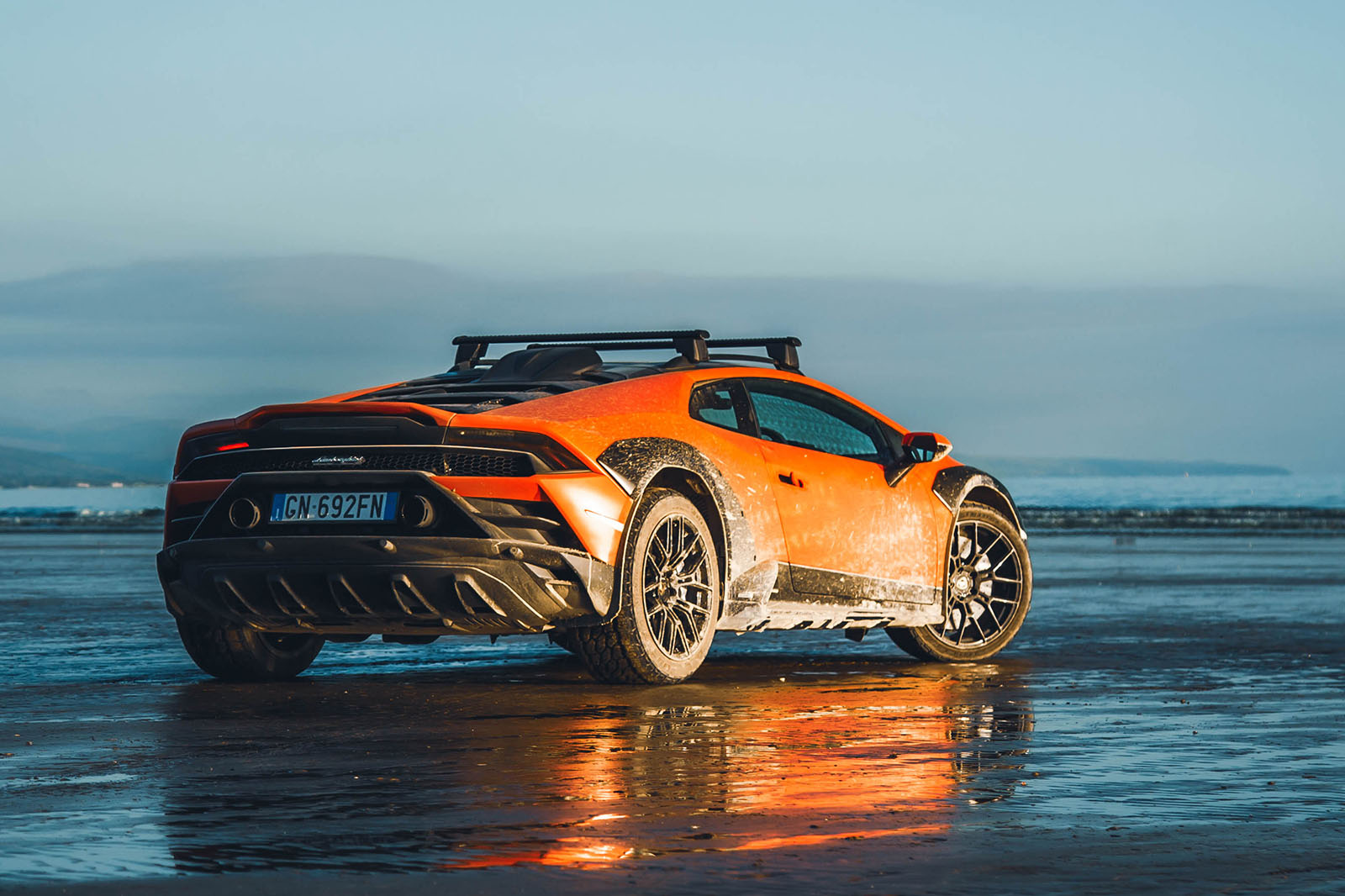And on the road, the Sterrato does show those kinds of tendencies. If it wasn’t quite so loud, didn’t have quite such a focused and cramped interior and a rear-view mirror that was rendered helpless by a roof-mounted air scoop, it would make a very pleasing grand tourer.
It has sweet steering, too: modestly weighted, very accurate and communicative.
It reminds us of an Ariel Nomad, mixed with a pinch of Alpine A110, which Mohr previously cited to Autocar as an inspiration: a light car with a chilled, relaxed gait and one that’s keen to turn off-throttle.
It’s hugely entertaining. It goes sideways, it makes a great noise and it’s easily controllable. And the nice thing about it is that, for all of the giggles that are virtually inevitable with an engine like this and a softly sprung off-road chassis, there’s real depth of ability to the dynamics too.
This blend of surreal softness and suspension travel with modern control means the Sterrato is possibly the most exploitable supercar to leave Sant’Agata. At least, it is once you've learned its style, which involves getting greedy with the throttle and using weight transfer to kill the front tyres’ habit of shuffling. You don’t tiptoe to the limit of grip.
It’s an unexpected joy to drive. Compared with its Evo sibling, what you lose in grainy steering feedback and telepathically instant responses, you gain in a lucid awareness of how the mass of the car is moving.
The importance of this can’t be overstated. Along with the diminished contact patch and the V10, the result is a supercar that wants to play, not just show off its raw ability.
The Sterrato changes course with the elastic swagger of a mogul skier, taking slithers of angle as you like. Yes, you can do this in a Huracán STO, but only on a near-perfect surface, with sky-high confidence. Even then, is it quite as fun?






